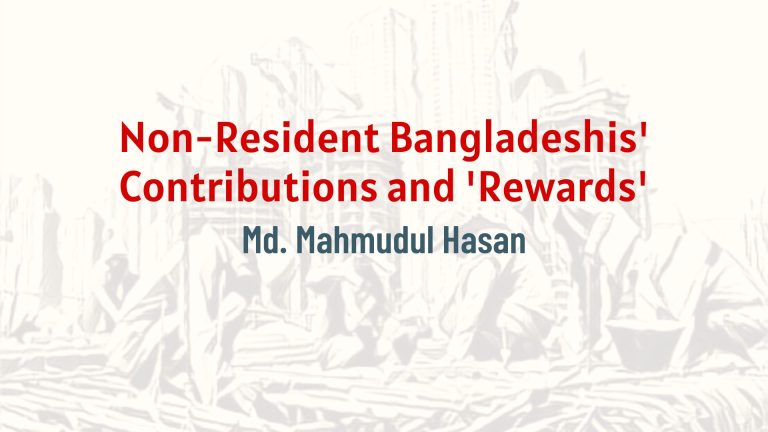Cost of production in Bangladesh is high. Cost of production increases every year in an inflation-ridden economy, Bangladesh is no exception. Conversely, the selling price also increases. Over the past three decades, minimum wages have increased eightfold, and export earnings in local currency terms have surged more than 60 times. Despite this, Bangladesh struggles to compete internationally, and the blame is often placed solely on the shoulders of unproductive labor, who are hired at a base wage of $72-75 a month, overlooking critical underlying issues. The productivity challenges faced by the clothing industry in Bangladesh are multi-faceted and require a comprehensive understanding of the factors at play.
Ironically, industry affiliated intellectuals & policy makers don’t look at the base-price of electricity and fuel, cost of road traffic jam, rent seeking in the form of administration, police & political extortion. There is high transport costs, rents, the high cost of expat managers hired to ensure high productivity of workers, the bureaucratic bribery lobbying etc. passive costs. There are health hazards in the dengue ridden and germ-infested cities incurring health costs. The direct and indirect ‘rent seeking’ costs including out-of-pocket public health expenses of the workers is ignored too.
It is cruel that the garment industry indiscriminately pollutes the environment, not to mention without investing high in environmental treatment, they are still unable to compete. Despite being the second-largest global exporter of garments, Bangladesh lacks global productivity benchmarks, its due to policy shortcomings rather than productivity of its workforce.

According to data provided by the Asian Productivity Organization, the hourly productivity of a Bangladeshi garment worker in terms of value stands at $3.4. This rate of productivity is relatively high in competing countries—Myanmar is $4.1, Vietnam is $4.7, India is $7.5, the Philippines is $8.7, China is over $11, and Sri Lanka is about $16.
Even with this low productivity, a worker working an average of 14-15 hours a day produces $1400-1430 a month. The owner pays him $70-80 plus $30-40 overtime. 130-140 dollars in total. A wage of $140 including overtime against labor of $1400. Where exactly is the complaint?
Contrary to claims that the industry lags in technological adoption, automation is prevalent in many aspects of production. However, the true issue lies in the lack of spending on training and development. Miserly owners often neglect investing in the skills of their predominantly underprivileged workforce, perpetuating a “helper culture” that hinders overall productivity, increasing overall headcounts. The absence of training & skill development centers for workers underscores a critical gap in the industry’s education and research landscape, contributing to a stagnant, imitative system. From a more nuanced understanding of cost dynamics to investing in training and development, and from fostering a humane work environment to implementing comprehensive human resource management reforms, a holistic approach is required to unlock the true potential of this vital sector in the country’s economy.
In reality productivity is not low at all. The underprivileged laborer is not a machine that will suck up productivity gains. There are no training centers to develop industrial technical skills of 2 million workers. A $50 billion industry lacks education and research completely. How do we expect high productivity in such a ‘monkey see, monkey do’ system?
It is a fact that the productivity of the garment industry would have been much lower if there were no private residential Qowmi Madrasahs in the country. Middle-aged women workers send their children to the madrasa as an alternative to child care system, allowing them to work . Government investment in these socially funded madrasas is zero. But government-owner Nexus was supposed to provide such care facilities.
As the rising cost of living makes it difficult for low-wage workers to stay in the cities. Being unable to survive, workers are fleeing to the countryside, where there are jobless marches and pseudo-unemployment. During long periods of high inflation, there is no year-end cost-of-living or wage adjustment process.
In exchange for violent attacks by the pro-regime thugs, loss of life, bloodshed and casualties in wage movement, a wage rise of 35 dollars has been proposed, totaling 100-105 dollars monthly. If such exploitative systemic problems in the human resource management in the RMG industry are not stopped via a more humanistic wage structure, better work-life balance allowances and benefits, and a friendly labor hour structure is not redefined the issue of low productivity will not come to an end.
The prevailing practice of overburdening workers, denying leave, and providing subpar working conditions results in a lack of motivation and efficiency. A shift towards a more humane approach, encompassing fair wages, balanced work hours, transport subsidy, food & nutrition subsidy, proper child care and improved working conditions, is essential for enhancing overall productivity.
Addressing Wage Disparities
In the global landscape of garment manufacturing, Bangladesh faces a considerable wage gap compared to its counterparts. While countries like China, Indonesia, Cambodia, India, and Vietnam boast average wages ranging from $170 to $303, Bangladesh lags behind with an average of $72-75. Workers have advocated for a minimum wage of Tk 23,000, equivalent to $190 as of November 9, 2023, considering the fluctuating exchange rates.
The Center for Policy Dialogue (CPD) has conducted an in-depth analysis, recommending a minimum wage of Tk 17,568 in the garment industry, translating to $150 at the official government rate, but only $140-142 at the current curb market rate. The depreciation of the purchasing power of the local currency prompts export-oriented industries to consider dollar-based wages, aiming to compete with countries like India or Vietnam, where the minimum wage stands at $170. The relatively lower cost of daily products in these countries, suggests a minimum wage of $160-170 for Bangladesh.
Bangladesh is second in the world in garment manufacturing, it wants to be first, but does not want to pay better wages. The proposal to raise the monthly wage from $70 to $105 encounters reluctance, with a stipulation that it will remain unchanged for the next five years. This approach, however, is unsustainable in the face of rising inflation and decreasing purchasing power, making a compelling case for a minimum wage of 20 thousand takas to counter the persistent cycle of labor exploitation and discrimination. A dollar based dynamic wage structure that adjusts annually is essential to address the evolving economic landscape.
Furthermore, the wage crisis is exacerbated by the artificial exchange rate of the dollar, impacting the Real Effective Exchange Rate (REER) of the Bangladeshi Taka. Bruegel’s October report indicates a fluctuation in the REER between 154.73 taka and 173.17 taka, suggesting that a $150 salary should equate to 23 thousand taka in terms of purchasing power.
Wage Increase: A Win-Win Proposition
The International Trade Administration’s Office of Textiles and Apparel (OTEXA) reports a notable 8.55% increase in the unit price of ready-made garments during the period from January to September 2023, rising from $3.02 to $3.27 compared to the same period in 2022.

Simultaneously, a positive shift is observed in the stance of global fashion brands toward paying higher prices for garments sourced from Bangladesh. The American Apparel and Footwear Association (AAFA), a prominent US-based global consumer organization boasting a membership of over 1000 brands, has committed to covering the additional 5-6 percent production costs resulting from the recent minimum wage hike in Bangladesh.
It is noteworthy that the 5-6 percent increase in production costs, attributed to the rise in minimum wages, is expected to be absorbed by these brands. Considering that labor expenses typically constitute a maximum of 10-13 percent of the total cost in the labor-intensive garment industry, the adjustment in wages is deemed manageable.
Moreover, the period from 2018-2023 has witnessed a notable boost, USD to BDT exchange rate hike approximately 32-35%, to the income of garment industry owners in taka. This financial upswing contradicts claims of economic constraints that might hinder wage increments.
As unit price is rising, dollar exchange is increasing & AAFA compensation is assured, the tears of Bangladesh’s garment industry owners must stop & the wage demand of the workers should be accepted.




